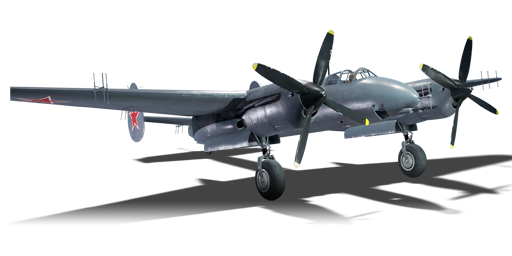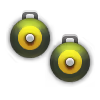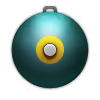


While working on the Tu-2 bomber, Tupolev was inspired to design a multipurpose aircraft capable of intercepting, bomber escort, and ground attack. First, a Tu-2 was modified to fit this task, and the military was interested enough to authorize the development of the new aircraft as a heavy fighter. Even when the war broke, the development continued, although this was slowed due to the Tu-2 becoming a priority. The aircraft was specially designed for interception and ground attack, featuring a radar in the nose, two 45 mm NS-45 guns installed in the front of the bomb bay, and two 23 mm NS-23 guns in the wings. With a crew of three, one pilot and two defensive gunners, the entire back of the aircraft was covered, both above and below the fuselage. While the tests in 1947 for the aircraft were successful, jet-powered aircraft started to be more and more common, and thus the project was scrapped.
It was introduced in Update "Direct Hit". The Tu-1 features a good number of advantages for the ground attack role. It has a very powerful armament and a good top speed; the four cannons are more than enough to deal with both ground and air targets, although the 45 mm cannons don't have the accuracy or rate of fire to be effective in air combat. To deal with ground targets, the set of three 1,000 kg bombs are excellent to deal with large quantities of enemies. One of these bombs is usually enough to destroy all targets in a capture point. For naval battles, the Tu-1 is also able to two 450 mm torpedoes that, while not the strongest, are capable enough to destroy light cruisers and destroyers. It should be noted that as a heavy fighter the acceleration is mediocre, and you should avoid dogfights as much as possible.
flaps
flaps
flaps
brake
| Belt | Belt filling | Armor penetration (mm) at a distance: | |||||
|---|---|---|---|---|---|---|---|
| 10 m | 100 m | 500 m | 1000 m | 1500 m | 2000 m | ||
| HEFI-T/HEFI-T/APHE | 59 | 57 | 48 | 38 | 31 | 24 | |
| HEFI-T | 8 | 7 | 6 | 5 | 4 | 4 | |
| HVAP-T | 76 | 73 | 59 | 46 | 36 | 28 | |
| APHE | 59 | 57 | 48 | 38 | 31 | 24 | |
| Belt | Belt filling | Armor penetration (mm) at a distance: | |||||
|---|---|---|---|---|---|---|---|
| 10 m | 100 m | 500 m | 1000 m | 1500 m | 2000 m | ||
| AP-I/FI-T | 32 | 30 | 22 | 15 | 10 | 7 | |
| FI-T/AP-I/AP-I/AP-I | 32 | 30 | 22 | 15 | 10 | 7 | |
| FI-T/FI-T/FI-T/AP-I | 32 | 30 | 22 | 15 | 10 | 7 | |
| AP-I | 32 | 30 | 22 | 15 | 10 | 7 | |
| Belt | Belt filling | Armor penetration (mm) at a distance: | |||||
|---|---|---|---|---|---|---|---|
| 10 m | 100 m | 500 m | 1000 m | 1500 m | 2000 m | ||
| T/AP/AP/IAI | 32 | 30 | 22 | 15 | 11 | 7 | |
| API-T/AP/AP/AP-I(c) | 34 | 32 | 24 | 17 | 12 | 8 | |
| API-T/AP-I | 29 | 27 | 20 | 13 | 9 | 6 | |
| Name | Weight | Slot | ||||||
|---|---|---|---|---|---|---|---|---|
| 2 × | 500 kg |  |  |  | ||||
| 477.1 kg |  |  |  | |||||
| 890.7 kg |  |  |  | |||||
| 951 kg |  |  | ||||||







 2 x (110 / 185 / 600) %
2 x (110 / 185 / 600) % 
 2 x 172 %
2 x 172 % 

Flight performance | |
|---|---|
Weaponry | ||
|---|---|---|